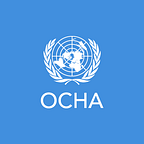Two years into COVID: 5 things that matter to the aid community
2022 will be yet another challenging year for countries experiencing humanitarian crises while still grappling with the pandemic. COVID-19 doesn’t just kill through disease; its secondary effects increase short-term suffering and long-term fragility, with the most vulnerable people facing the greatest risks. These groups include people living under non-State armed groups, women and girls, people with disabilities, internally displaced people, migrants and refugees.
Without an urgent response, the most vulnerable and conflict-affected countries will be left behind in the global pandemic recovery.
1. The most vulnerable people still can’t access testing or vaccines
Almost three years into the pandemic, there is still a global gap in access to testing and vaccines. Testing rates in high-income countries are 80 times higher this year than in low-income countries. The poorest and most conflict-affected places have little access to testing, making it harder to treat and contain COVID-19 outbreaks. This is exacerbated by low vaccination rates, as these countries struggle to overcome vaccine hesitancy and weak health care and transport infrastructure to administer doses.
While third and even fourth booster doses are being rolled out in wealthier nations, countries such as the Democratic Republic of the Congo and Haiti have vaccinated less than 1 per cent of their population. When there is a lack of testing and vaccination coverage, new variants are more likely to emerge. The World Health Organization has set a goal to vaccinate 70 per cent of the global population by June 2022. But to meet that goal, 1 billion doses still need to be delivered to countries with humanitarian crises.
2. COVID-19’s secondary effects remain deadly
Food insecurity and extreme poverty have increased; 11 people died every minute* from hunger last year compared to seven people dying every minute from COVID-19.
Because of the pandemic, at least 20 routine immunization campaigns for other diseases were postponed every month across countries in the Global Humanitarian Overview (GHO). Countries face large debts amid increasing pandemic-related inflation, depleting the funds they need to support social safety nets and respond to humanitarian needs.
3. Decades of progress are being lost
COVID-19 and its secondary impacts continue to undo years of development gains in poverty reduction, education and gender equality. During the pandemic, many people lost their jobs or were pushed into informal employment. Informal workers’ earnings have not yet recovered to pre-pandemic levels. At the country level, advanced economies will achieve a full economic recovery by 2023, while conflict-affected economies remain 7.5 per cent below pre-pandemic levels.
Children face a nearly insurmountable loss of education, even as schools reopen. Last year, at least 233 million students in GHO countries were out of school due to pandemic-related school closures. Many students in humanitarian settings have no access to remote technologies for distance learning. Without school, children face pressure to work or enter into early marriage, and girls are at greater risk of teenage pregnancy. Many students will never return to classrooms, narrowing their employment opportunities and life outcomes.
Women remain disproportionately affected by the pandemic. It devastated industries dominated by women, forced women and girls to take on additional caregiving responsibilities, and increased gender-based violence. This pushed the closure of the gender gap back a generation.
4. COVID-19 will drive armed conflict and unrest
The pandemic creates the conditions that fuel armed conflict and unrest, driving up humanitarian needs. Increased poverty, economic desperation and school closures push people to join armed groups and gangs voluntarily or by force, swelling their ranks. The pandemic is projected to lead to 15 new or resumed armed conflicts before 2023, driven by socioeconomic fallout.
Increased civil unrest also remains a risk in 2022. Protests increased globally throughout the pandemic, based on ACLED data, while civil unrest peaks two years after the initial disease outbreak, according to research by the International Monetary Fund. Governments continue to use the pandemic as justification to erode rights and undermine checks and balances. And coups are increasing; last year sub-Saharan Africa experienced its highest number of coups in 20 years.
5. Solutions are in reach
Countries with humanitarian crises need more funding and support to address the pandemic’s acute and long-term impacts. As COVID-19 will likely become endemic, preventing catastrophic outcomes requires a multi-step approach.
First, reach vaccination targets. Endemic COVID-19 will remain deadly for countries with low vaccination rates. Getting vaccines into arms is necessary to prevent cases and deaths and enable countries to recover socioeconomically.
Second, stabilize the economies in humanitarian settings. High-income countries should reallocate their Special Drawing Rights to lower-income countries to provide urgently needed funds. The Debt Service Suspension Initiative ended in December 2021, meaning 14 countries with a humanitarian crisis must now resume their debt repayments while also repaying debts from 2020 and 2021. Sustainable debt restructuring is needed to prevent further instability in these economies.
Third, fund the GHO. The 2022 GHO requires US$41 billion to help 183 million of the 235 million people in need — an increase from last year partly due to the pandemic. Financing humanitarian response plans is vital to help countries recover.
For more analysis of the pandemic’s impact on humanitarian operations, see the 2021: Year in Review. Stay updated by signing up for the COVID-19 Quarterly Highlights in 2022.
*As on July 2021
